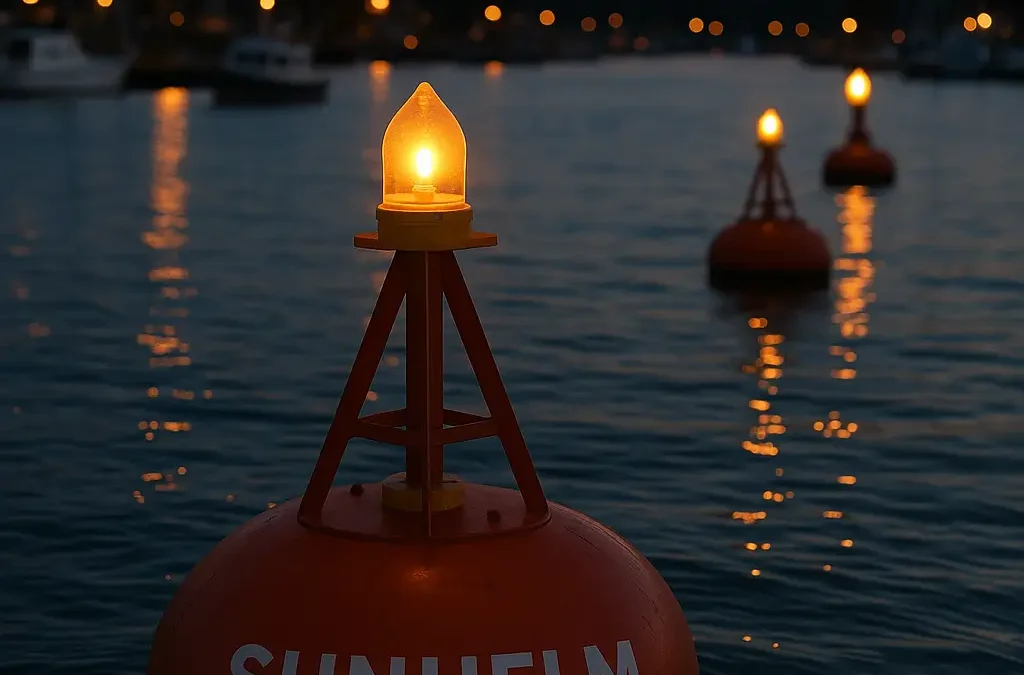Когда огромная волна устремляется к побережью, важна каждая секунда. Цунами может двигаться быстрее реактивного самолета - иногда более 500 миль в час. К тому времени, когда оно достигнет берега, оно может разрушить дома, порты и жизни людей. Вот почему так важны системы раннего предупреждения.
Но может ли что-то такое маленькое, как плавучий буй, вовремя обнаружить цунами? Ответ положительный - при наличии соответствующей технологии, буи являются одним из лучших инструментов для обнаружения цунами до того, как они достигнут суши.
В этой статье рассказывается о том, как работают буи, почему они важны и как они помогают спасать жизни и защищать порты, подобные вашему.
Кто заботится об обнаружении цунами?
Обнаружение цунами - это работа не только для ученых. Оно важно для многих людей:
- Прибрежные семьи, которые хотят понять, как работают ранние предупреждения.
- Учителя и ученики изучают океан.
- Портовые операторы и судоходные компании, которые зависят от безопасных гаваней.
- Инженеры и экологические команды, которые строят и контролируют морские системы.
- Все, кто живет, работает или путешествует вблизи моря.
Понимание того, как буи Обнаружение цунами помогает всем лучше подготовиться.
Что такое цунами?
Цунами - это не обычная волна. Оно возникает, когда что-то нарушает морское дно - землетрясение, оползень или извержение вулкана. Это движение толкает огромное количество воды, создавая волны, которые распространяются по океану.
На большой глубине цунами может пройти незамеченным, потому что волна очень длинная и низкая. Но по мере продвижения к мелководным участкам вблизи побережья волна замедляется и становится выше - иногда ее высота достигает десятков футов.
Именно тогда это становится опасным. Без ранних предупреждений от таких систем, как буи, У людей и кораблей может быть мало времени, чтобы спастись.
Как работает сеть обнаружения цунами
Обнаружение цунами требует совместной работы многих инструментов:
- Датчики землетрясений показывают, где и когда происходит землетрясение.
- Спутники Отслеживать изменения уровня моря на больших территориях.
- Приливные датчики измерение высоты прибрежных вод.
- И буи - Плавучие устройства с датчиками - предоставляют прямую информацию из открытого океана.
Каждый инструмент играет свою роль. Данные о землетрясениях подсказывают ученым, что цунами может форма. Но только буи может подтвердить, что через океан движется настоящая волна цунами.
Как буи обнаруживают цунами
Современное цунами буи это не просто плавающие на воде шары. Это умные приборы, связанные с датчиками на дне океана.
Вот как они работают:
- А датчик давления Располагается на морском дне и измеряет крошечные изменения давления воды.
- Когда проходит волна цунами, давление немного меняется из-за того, что над ней появляется дополнительная масса воды.
- Датчик посылает сигнал на буй, плавающий на поверхности.
- Буй мгновенно передает эту информацию через спутник в центр предупреждения на суше.
Затем ученые проверяют полученные данные. Если сигнал показывает длинную, медленно движущуюся волну, они могут подтвердить, что сформировалось цунами. Оповещения рассылаются правительствам, портам и населению - часто в течение нескольких минут.
Некоторые новые буи также используют GPS для отслеживания небольших изменений поверхности моря. Это дает дополнительный слой данных для повышения точности.
Почему буи имеют значение
Буи Обеспечивают получение данных из океана в режиме реального времени, чего не может сделать ни один спутник или датчик землетрясений.
Они помогают ученым определить, является ли цунами реальным или это просто ложная тревога. Это означает сокращение числа ненужных эвакуаций и ускорение принятия решений для портовых операций.
Для портовые операторы, Каждая минута предупреждения может спасти суда, грузы и работников. Буи сделайте эти дополнительные минуты возможными.
Вызовы и ограничения
Даже самые лучшие технологии имеют свои пределы.
- Буи дорогостоящие в изготовлении и обслуживании. Суровая погода, коррозия или морские наросты могут повредить их детали.
- Иногда связь не работает, особенно во время сильных штормов.
- В глобальном охвате все еще существуют большие пробелы - не во всех районах океана есть буи.
- Ложные сигналы могут возникать из-за обычных приливов, штормов или проходящих мимо кораблей.
Тем не менее, ученые с каждым годом совершенствуют конструкцию буев. Более прочные материалы, лучшие батареи и более быстрая передача данных делают новые буи надежнее, чем когда-либо.
Примеры из реальной жизни
До 2004 года в Индийском океане было очень мало цунами. буи. Когда в том году произошло мощное землетрясение, отсутствие раннего предупреждения привело к одной из самых смертоносных катастроф в истории.
После этого в разных странах мира были установлены новые системы, такие как Сеть DART (Оценка глубоководных океанов и сообщение о цунами). Эти буи с тех пор зафиксировали настоящие цунами в Тихом и Атлантическом океанах.
Сегодня благодаря этим сетям оповещения доходят до населенных пунктов и портов за считанные минуты, что дает людям ценное время для принятия мер.
Чему могут научиться портовые операторы
Для портов и гаваней предупреждение о цунами - это не просто безопасность, это выживание.
Понимание буй Благодаря полученным данным руководители портов могут быстро принять меры по перемещению судов, закрытию ворот или эвакуации персонала. Многие современные порты теперь напрямую подключены к национальным системам оповещения о цунами, что позволяет им получать самые оперативные данные.
Тесное сотрудничество с сетями мониторинга океана позволяет портам защищать активы, сокращать время простоя и спасать жизни людей.
В компании Sunhelmmarine мы считаем, что интеллектуальные морские системы, включая буи - являются ключом к более безопасной и эффективной работе порта.
Краткие вопросы и ответы
Вопрос 1: Как рано буи могут обнаружить цунами?
→ Часто в течение нескольких минут после образования, в зависимости от расстояния до землетрясения.
Вопрос 2: Могут ли буи совершать ошибки?
→ Иногда. Но ученые перепроверяют данные с помощью других датчиков, чтобы подтвердить их.
Q3: Используются ли буи только при цунами?
→ Нет. Они также отслеживают волны, погоду, температуру и уровень моря.
Вопрос 4: Могут ли порты получить доступ к данным буев?
→ Да. Многие сети данных обмениваются информацией о цунами и волнах в режиме онлайн.
Заключение
Буи безмолвные герои океана.
Они чувствуют небольшие изменения давления глубоко под водой и передают быстрые предупреждения, которые могут спасти тысячи жизней.
Хотя ни одна система не является совершенной, каждый буй повышает безопасность наших берегов и портов.
Они дают нам нечто бесценное - время на подготовку, защиту и выживание.
На сайте Sunhelmmarine, Мы поддерживаем умные морские технологии, которые делают океаны безопаснее для всех.


